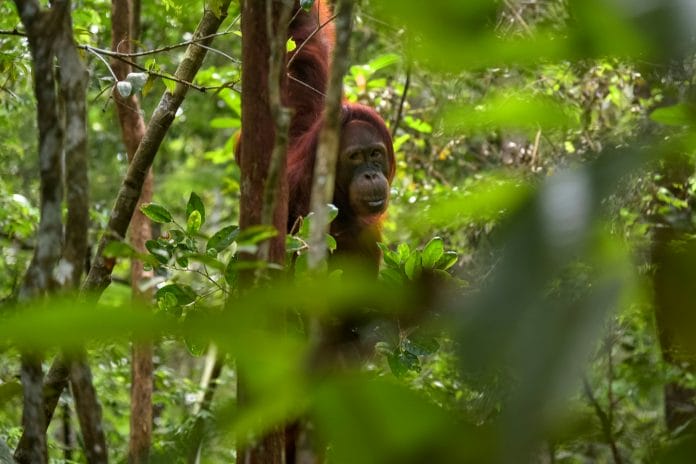By: Megat Daniel Izmeer M. Al-Imran, Assoc. Prof. Dr. Hasmahzaiti Omar, Institute of Biological Sciences, Faculty of Science, Universiti Malaya
The first step to conserve and protect earth’s wildlife is by knowing accurately where every species lives. It has become the biggest obstacle to obtain precise data on the status and the population distribution of these diverse creatures for conservationists, scientists, and policymakers to achieve restoration of the ecosystem.
Especially for a top megadiverse country home to various species like Malaysia, wildlife monitoring needs to improve its efficiency in gathering useful information required for the conservation efforts of its large biodiversity. Malaysia plays a crucial role in the conservation of the richness in diversity of floras and faunas, which can be found in the rainforests of Malaysia.
Based on the Sixth National Report of Convention on Biological Diversity in 2019, Malaysia has an estimated of 306 species of mammals, 567 species of reptiles, 742 species of birds, 242 species of amphibians, and more than 449 species of freshwater fish.
Biodiversity monitoring in Malaysia is largely conducted by actively searching for the species of animals or plants at a certain location using physical identification techniques such as direct observation, camera trapping, capture and release and observing signs of the animal such as footprints and faeces. Identifying species, especially ones that are almost similar to each other in appearance can be difficult using these methods and require lots of taxonomic expertise for different groups of species. Some monitoring techniques may also be invasive to the species or the environment such as marine surveys that rely on highly destructive methods. Moreover, monitoring wildlife using these techniques are often very time consuming when observing a large scale of diversity of wildlife. Alternative methods are demanded to combat these limitations and challenges of biodiversity monitoring.
A promising approach is by detecting the species’ genetic traces, which is their DNA. When an animal interacts with their surroundings, they shed bits of themselves such as dead skin cells, mucus and faeces which serves as a biological fingerprint that can be extracted by taking samples from the environment such as soil, water, and ice cores. Just like how forensic scientists gather information to solve a crime committed at a crime scene, imagine that being possible for identifying the animals present in any environment. One beaker of soil may contain genetic material of all the organisms that have recently passed through that specific area. This means, we can easily detect the presence of wildlife without even having to see them. The DNA found in organic matter is known as environmental DNA (eDNA).
Environmental DNA is a new and powerful tool to examine environments quickly to detect changes in an ecosystem. The implementation of eDNA expands our ability to not only understand individual species but entire ecosystems. By using Next-Generation Sequencing (NGS), it is possible to detect thousands of species simultaneously from a single sample. Through simple analysis, we are able to study the ecosystem that exists at that particular location from the large visible animals like elephants to even microscopic creatures such as phytoplankton. This is all possible by analysing the unique sequence of DNA found in an environmental sample then matching it to a species having the same sequence of DNA found in a database or DNA libraries. After that, we can pinpoint animals where the animals are found and predict its status and population distribution based on where we collected the environmental sample.
This biodiversity monitoring technique can detect threatened and endangered species to aid them with conservation efforts from facing threats which may lead to their extinction. Critically endangered such as Malayan Tiger, Malayan Water Shrews, Black Shrew, Malayan Round-Leaf Bat, Convex Horseshoe Bat, and Sunda Pangolin populations can be assessed in their habitats, providing crucial data for the protection and restoration of their habitats. Through its capacity to identify the genetic traces of elusive creatures, eDNA emerges as an invaluable tool in the ongoing efforts to preserve Malaysia’s endangered species and conserve its rich biodiversity.
Environmental DNA can also be a very crucial tool for various important sectors especially agricultural sectors in identifying the pests infesting the crops to increase the yield production and for industrial sectors, it helps to mitigate the biodiversity impacts during the construction or implementation of the industrial project by observing the biodiversity present from time to time if they are affected by the industrial activities. The use of eDNA can also improve ecotourism sectors by becoming a tool to report the species diversity and richness found in the location to attract more nature loving tourists.
The application of environmental DNA and NGS technology in Malaysia is still new in wildlife monitoring compared to other countries. Therefore, as Malaysia endeavours to preserve its natural heritage for future generations, the adoption of the advancing environmental DNA technology should be implemented in biodiversity assessment to ensure effective conservation practices and to position Malaysia at the forefront of innovative and efficient biodiversity management using these constantly advancing technologies.









